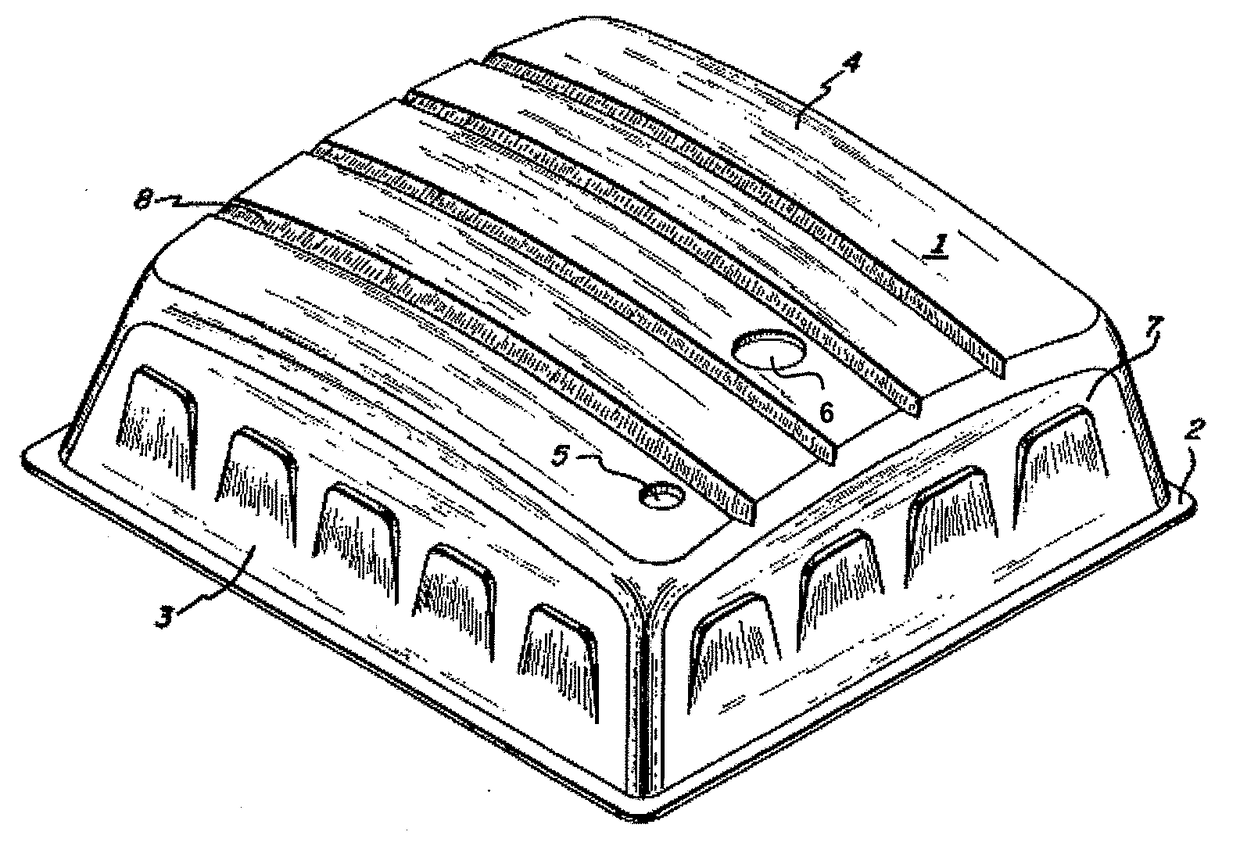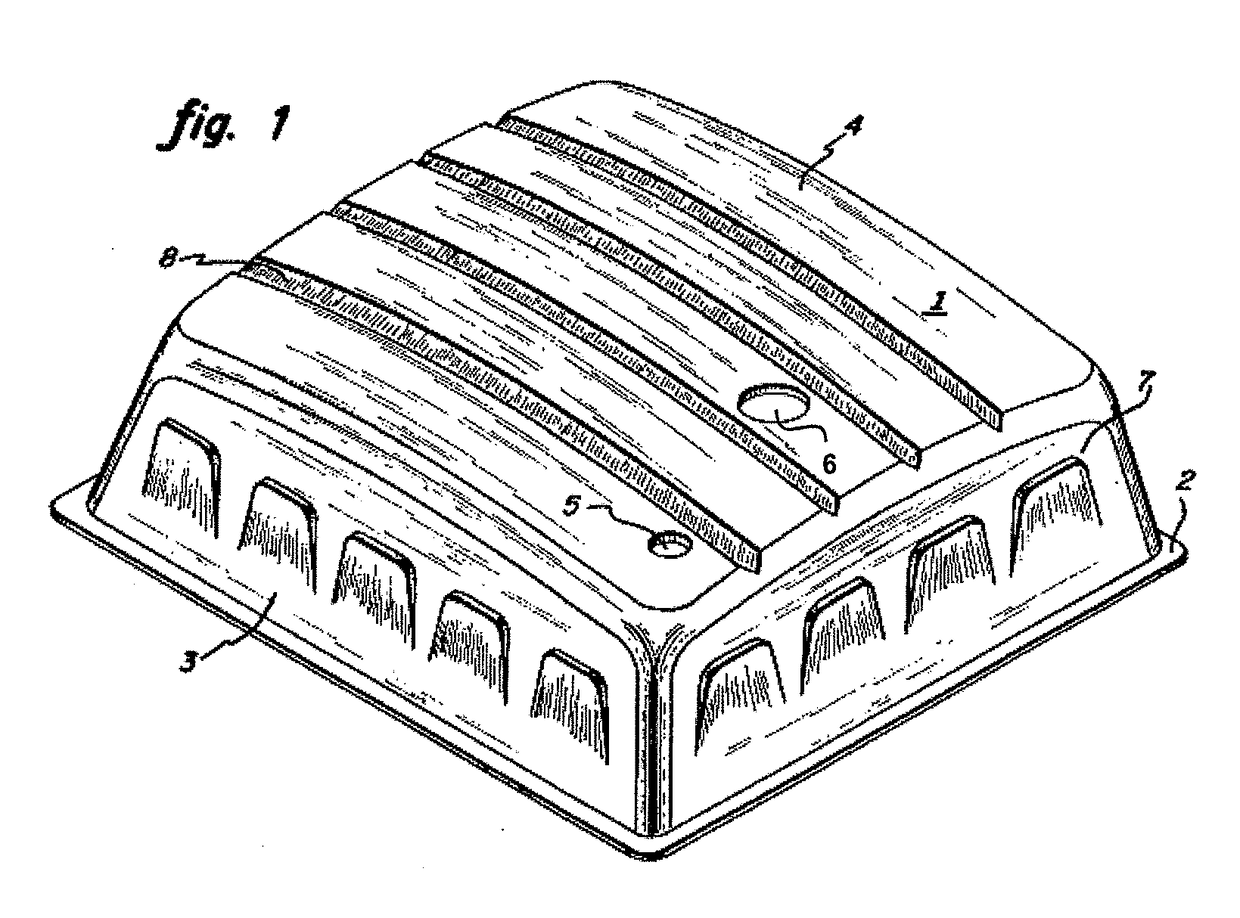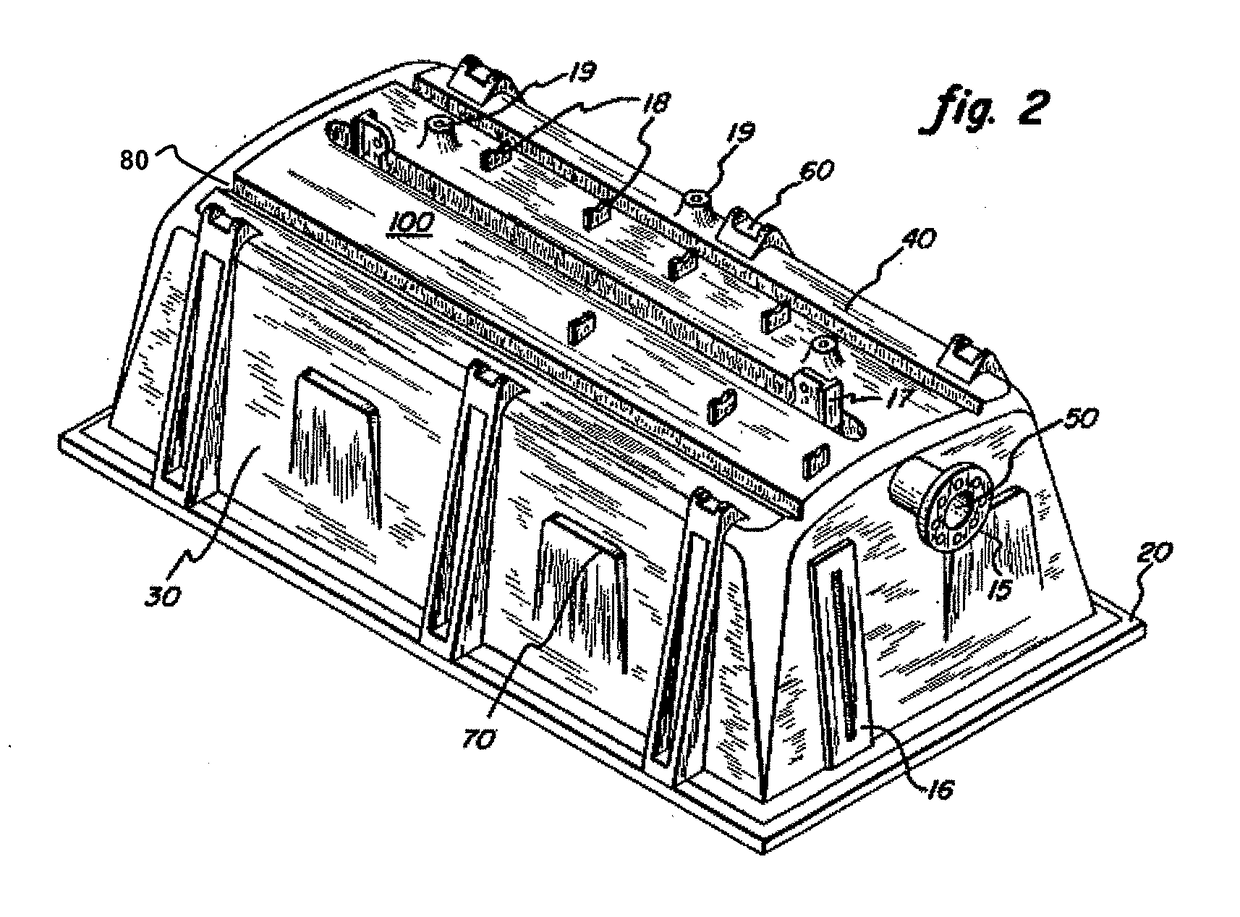Electrolytic cell covers comprising a resin composition polymerized with a group 8 olefin metathesis catalyst
a technology of olefin metathesis and electrolysis cell, which is applied in the field of manufacture of electrolysis cell covers, can solve the problems of structural deformation of wood structures, limitations were ultimately discovered, fouling and contaminating electrolysis cells, electrolysis products,
- Summary
- Abstract
- Description
- Claims
- Application Information
AI Technical Summary
Benefits of technology
Problems solved by technology
Method used
Image
Examples
example 1
[0235]This example demonstrates the manufacture of an article within the scope of the present invention, particularly an electrolytic cell cover. An electrolytic cell cover having a weight of approximately 550 lbs. was molded from a resin composition polymerized with a Group 8 olefin metathesis catalyst. The resin composition was (i) Ultrene® 99 Polymer Grade DCPD (containing 6% tricyclopentadiene); (ii) 2 phr Ethanox® 4702; and (iii) 4 phr Kraton® G1651H. The Group 8 olefin metathesis catalyst was ruthenium catalyst[1,3-bis-(2,4,6-trimethylphenyl)-2-imidazolidinylidene]dichloro(3-methyl-2-butenylidene)(tricyclohexylphosphine) ruthenium (II) (C827, available from Materia, Inc.) (monomer to catalyst ratio 60,000:1) suspended in mineral oil (Crystal Plus 500FG) containing 2 phr Cab-o-sil TS610. The electrolytic cell cover was molded in an aluminum mold. The mold comprised two aluminum sections, one male section to define the interior (core) of the electrolytic cell cover and one femal...
example 2
[0236]This example demonstrates the manufacture of an article within the scope of the present invention. An electrolytic cell cover having a weight of approximately 550 lb was molded from a resin composition polymerized with a Group 8 olefin metathesis catalyst. The resin composition comprising (i) Ultrene® 99 Polymer Grade DCPD (containing 6% tricyclopentadiene); (ii) 2 phr Ethanox® 4702; and (iii) 4 phr Kraton® G1651H. The Group 8 olefin metathesis catalyst was ruthenium catalyst [1,3-bis-(2,4,6-trimethylphenyl)-2-imidazolidinylidene]dichloro(3-methyl-2-butenylidene)(tricyclohexylphosphine) ruthenium (II) (C827, available from Materia, Inc.) (monomer to catalyst ratio 60,000:1) suspended in mineral oil (Crystal Plus 500FG) containing 2 phr Cab-o-sil TS610. The electrolytic cell cover was molded in an aluminum mold. The mold comprised two aluminum sections, one male section to define the interior (core) of the electrolytic cell cover and one female section to define the exterior (c...
example 3
[0237]This example demonstrates the manufacture of an article within the scope of the present invention. An electrolytic cell cover having a weight of approximately 880 lb was molded from a resin composition polymerized with a Group 8 olefin metathesis catalyst. The resin composition comprising (i) Ultrene® 99 Polymer Grade DCPD (containing 6% tricyclopentadiene); (ii) 2 phr Ethanox® 4702; and (iii) 4 phr Kraton® G1651H. The Group 8 olefin metathesis catalyst was ruthenium catalyst [1,3-bis-(2,4,6-trimethylphenyl)-2-imidazolidinylidene]dichloro(3-methyl-2-butenylidene)(tricyclohexylphosphine) ruthenium (II) (C827, available from Materia, Inc.) (monomer to catalyst ratio 60,000:1) suspended in mineral oil (Crystal Plus 500FG) containing 2 phr Cab-o-sil TS610. The electrolytic cell cover was molded in a composite mold. The mold comprised two composite sections, one male section to define the interior (core) of the electrolytic cell cover and one female section to define the exterior (...
PUM
| Property | Measurement | Unit |
|---|---|---|
| thickness | aaaaa | aaaaa |
| thickness | aaaaa | aaaaa |
| temperature | aaaaa | aaaaa |
Abstract
Description
Claims
Application Information
 Login to View More
Login to View More - R&D
- Intellectual Property
- Life Sciences
- Materials
- Tech Scout
- Unparalleled Data Quality
- Higher Quality Content
- 60% Fewer Hallucinations
Browse by: Latest US Patents, China's latest patents, Technical Efficacy Thesaurus, Application Domain, Technology Topic, Popular Technical Reports.
© 2025 PatSnap. All rights reserved.Legal|Privacy policy|Modern Slavery Act Transparency Statement|Sitemap|About US| Contact US: help@patsnap.com



